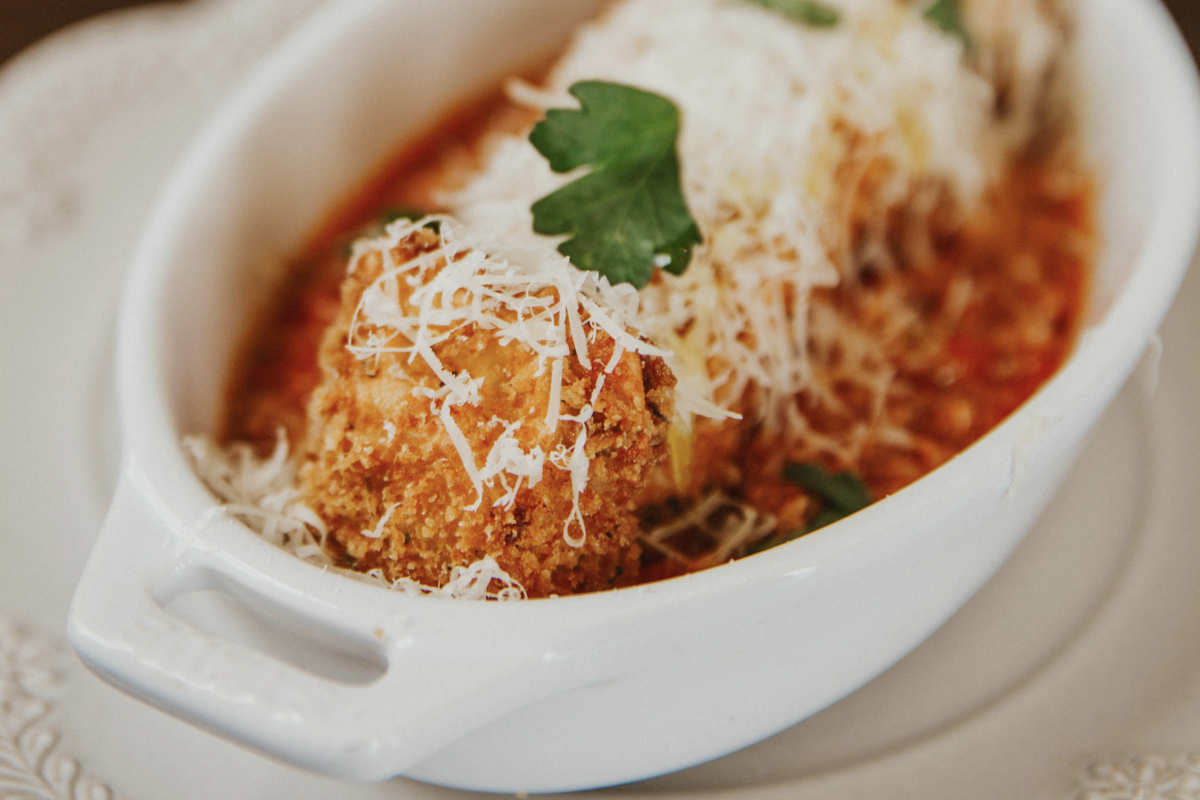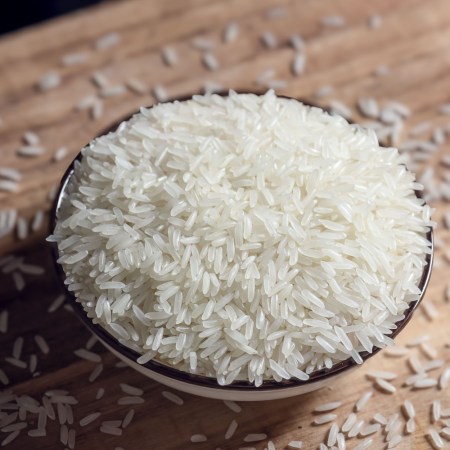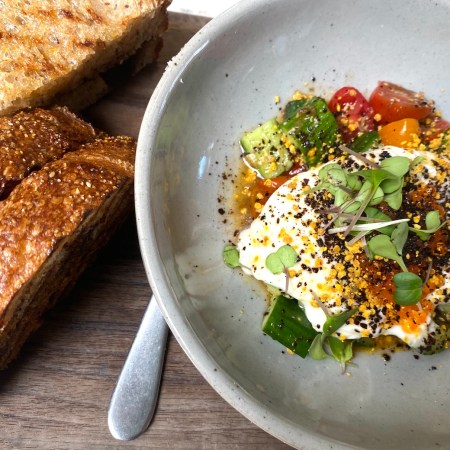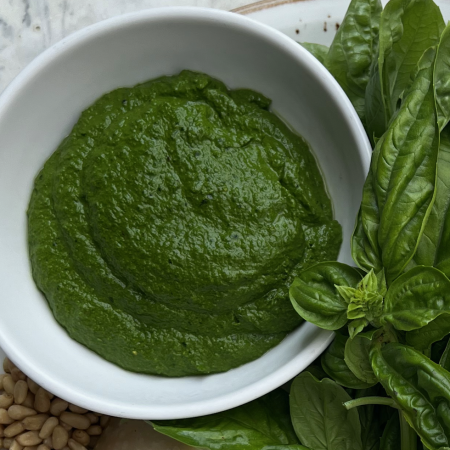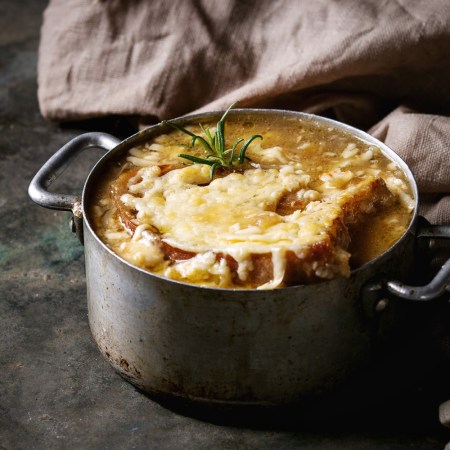With a population of around 300,000, St. Louis is capable of producing enough toasted raviolis per day to give every single person in the city one of the breaded and deep-fried appetizers as well as a bowl of red sauce to dip it in…but what in the heck is a toasted ravioli?
A fixture on the menus of restaurants located in the long-established Italian-American neighborhood known as The Hill, toasted raviolis, or t-ravs, are also a topic of hot debate as their origin story is murkier than the nearby waters of the Mississippi. As the most popular story goes, a cook in the 1940s at a long-gone eatery called Oldani’s Restaurant was drinking red wine while making scaloppini and accidentally dropped some raviolis into the fryer.
After the cook rescued them, one of the proprietors at Oldani’s (which is now the site of Mama Campisi’s) brought the pillowy pieces of meat and dough out to the bar. They were a hit and were christened as “toasted” because the Oldanis didn’t want to use “fat fried” or “greasy fried” because of the way it would sound, according to St. Louis Magazine.
That story checks out with what chef Tom Lents, the culinary director for Aparium Hotels and the group’s Italian restaurant Lazia in nearby Kansas City, heard when he arrived in Missouri. “I love the idea that it was done by accident. You can literally go into The Hill on St. Louis and I think there are four different restaurants that claim that it’s theirs,” Lents tells InsideHook. “For me, that’s the definition of a great regional dish. Everybody wants a piece of it. I’ve always joked, ‘How did it fall into the breadcrumbs before it was dropped into the fryer?’”
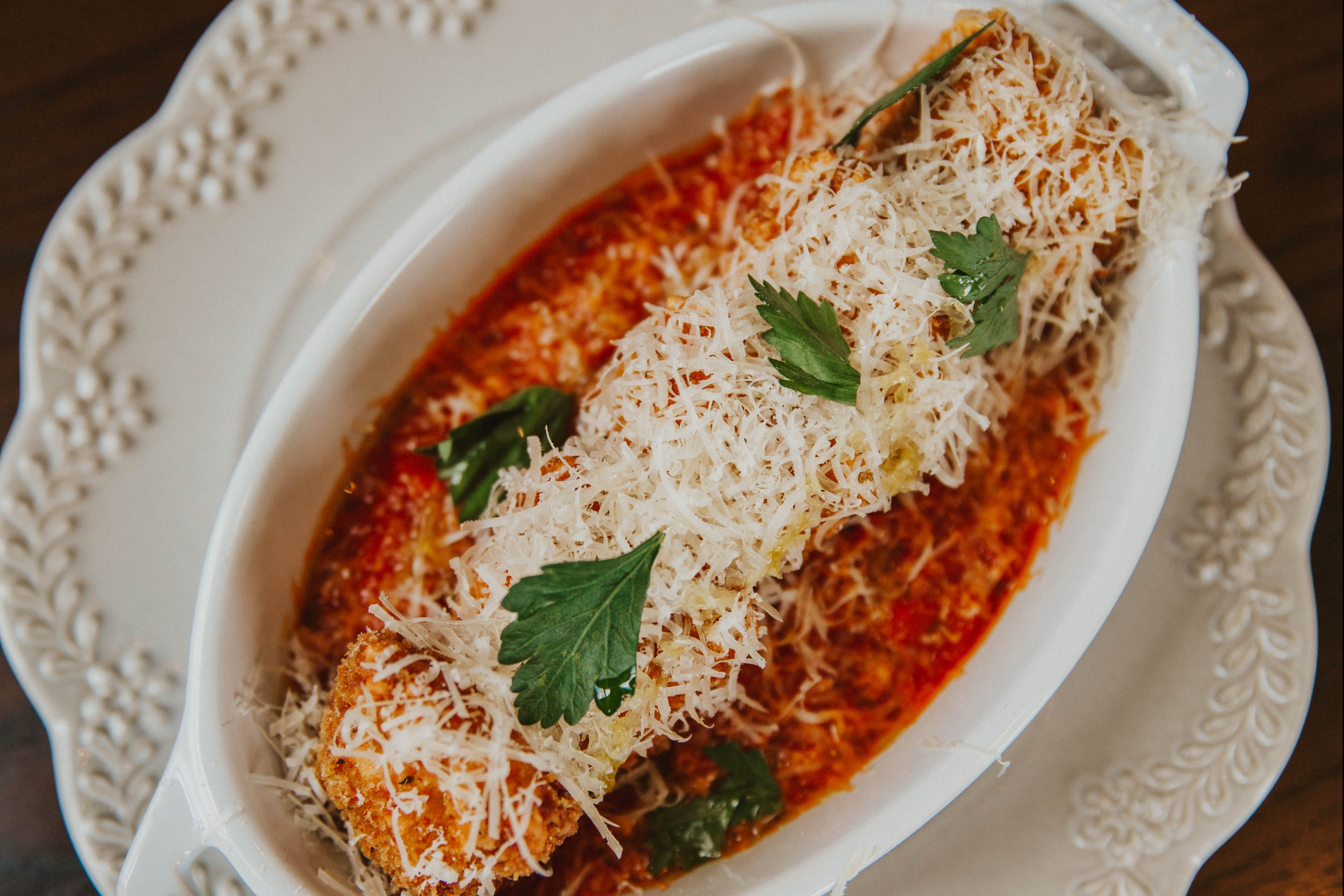
A Michigan native who spent years working in kitchens in the U.S. as well as in France, Italy, England and Ireland before finding his way back to the Midwest, Lents believes his first experience with toasted ravioli was with the variety that can sometimes be found in the supermarket freezer aisle. That experience didn’t really make much of an impression on Lents, but having an authentic version of the dish up on The Hill in St. Louis about 15 years ago did.
“It’s interesting when you find something that’s become so popular it’s become mass-produced and then you trace its origins to where the greatness really was,” he says. “Getting to eat in those restaurants and seeing the pride that they took in this world-famous toasted ravioli, I realized there was more to this than what I had ever expected. These rabbit holes where you can find meaning and history and food are what I really get excited about as a chef.”
That excitement prompted Lents and his team to intentionally experiment with dropping pasta infused with a mixture of fillings into a deep fryer over the course of six weeks in order to develop a toasted ravioli recipe for Lazia’s menu.
“We started out with a meat filling and realized relatively quickly we wanted to move to a cheese filling. It’s a provel cheese blend that doesn’t really exist outside of that area,” he says. “We played around with it and made sure you can break it apart and pull the cheese 18 inches. It had to stretch. That’s a toasted ravioli for me. We also added in a little bit of truffle to elevate it a little and give a bit more earthiness as well as add a slightly funkier element to it. Especially because of the cheese elasticity, I’d stack it up with any of them from The Hill.”
And now you can try them at home, too.
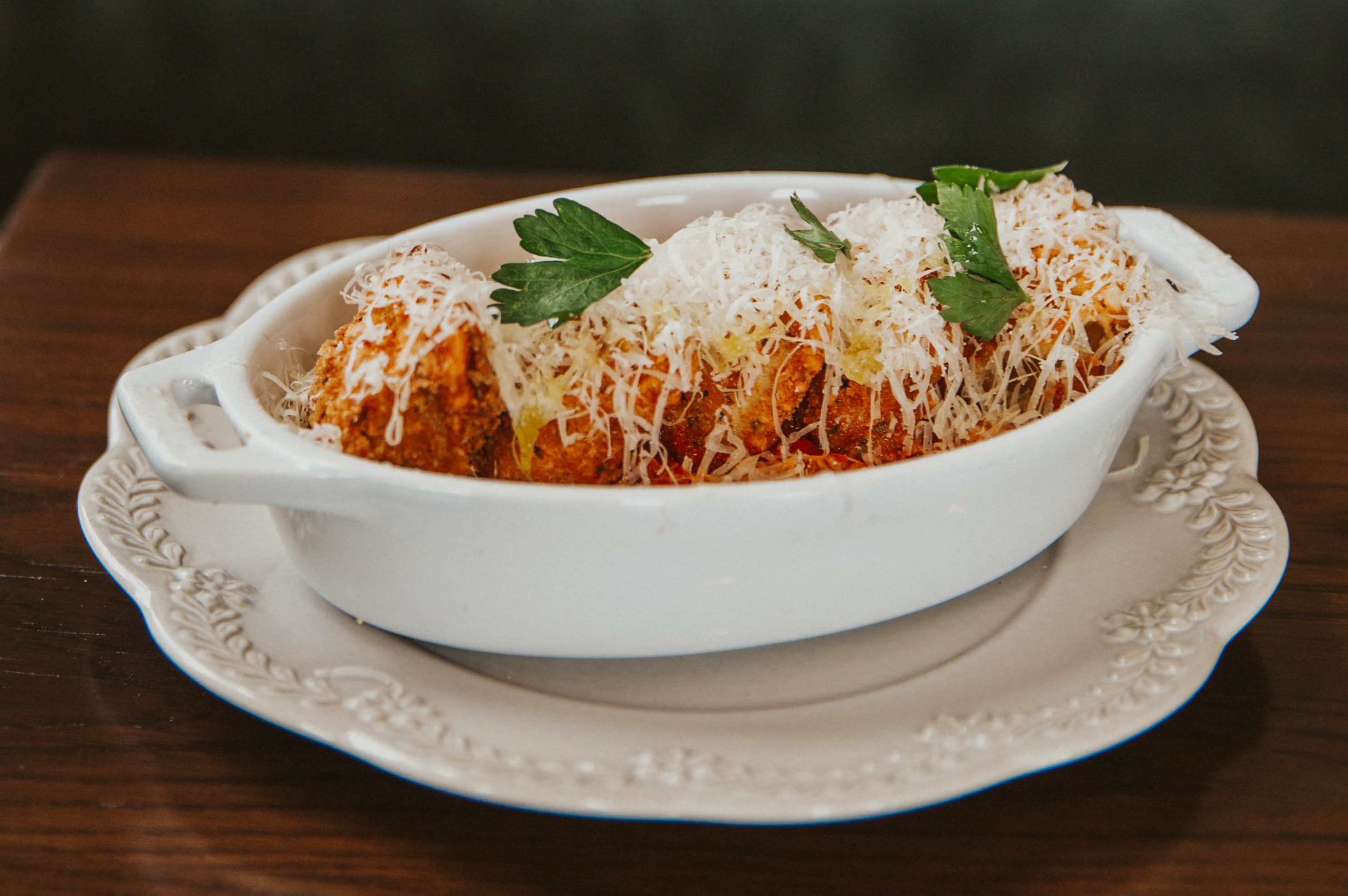
Lazia’s Toasted Ravioli
Ingredients for pasta dough:
- 16 oz. 00 pasta flour (can substitute quality AP flour)
- 9 oz. whole eggs (lightly beaten)
Directions for the pasta dough:
- Combine flour and eggs in a food processor and pulse on and off until shaggy dough forms.
- Remove and knead by hand into a ball and continue kneading for approximately 10 minutes until elastic and springs back to touch.
- Wrap tightly and allow to rest for at least one hour before rolling out.
Ingredients for the provel filling:
- 4 oz. shredded swiss cheese
- 5 oz. shredded Monterey Jack cheese
- 7 oz. shredded low moisture mozzarella cheese
- 1 oz. minced garlic
- 1 tsp. fresh oregano chopped
- 2 oz. chopped canned or frozen black truffles
- 2 oz. cream
Directions for the provel filling:
- Saute garlic in olive oil until just softened.
- Add chopped truffle and cream.
- Bring to a simmer and turn off heat. Add oregano.
- Combine cheeses into a KitchenAid mixing bowl. Add warm garlic truffle cream. Season with salt and pepper.
- Mix with a paddle attachment until all is smooth.
- Remove and allow to set and cool in a shallow pan.
Instructions for the ravioli:
- Take half of the pasta dough and run it through a pasta machine. Starting at the largest setting and adjusting down until you can just see your hand through the rolled dough (last one or two notches on the pasta machine).
- Lay out the long pasta sheet, cut in half and cover with a kitchen towel to avoid drying out.
- Using a 1/4 oz. scoop, portion out the provel filling and place on one of the pasta sheets about ½ inch between each portion.
- Mist the pasta sheet lightly with a water spray bottle and place the second pasta sheet gently on top.
- Pinch and press around the edges of the pasta sheets and each of the balls of filling to remove air gaps.
- Using a square ravioli cutter, press straight down firmly over each portion, sealing and forming the ravioli.
- Place on a sheet tray dusted with semolina and allow to dry slightly for approximately 20-30 minutes.
- Boil the ravioli in a large amount of salted water for 2-3 minutes or until they float and the pasta is cooked with a bit of bit remaining (al dente).
- Remove from the water and onto a large tray. Keep them separate so they do not stick together. Do not rinse or coat with oil. Allow to cool.
Ingredients for the breading:
- 8 oz. panko bread crumbs
- 1 tsp. dried basil
- 1 tsp. dried oregano
- 1 tsp. garlic powder
- 1 tsp. onion powder
- 1 tsp. finely grated parmesan
- Salt and pepper to taste
- AP flour as needed
- Egg wash as needed (3-4 eggs with a dash of water. Beaten until smooth)
Directions for the breading:
- Blitz the panko, herbs, spices, salt, pepper and parmesan in a food processor until fine.
- Place breadcrumb, egg wash and flour in 3 separate bowls.
- Coat boiled ravioli first in flour, then egg, then breadcrumb assuring the ravioli is completely coated in bread crumbs.
- Reserve and cool.
To serve:
- 24 breaded raviolis (6 per person)
- 2-3 quarts of neutral cooking oil heated to 350 degrees in a high-sided pot to avoid splatter
- 12 oz. high-quality marinara sauce (warmed)
- Freshly grated parmesan cheese
- Chopped parsley or basil
- Optional chili flake
To assemble
- In batches, carefully fry the raviolis in the oil for 2-3 minutes or until golden brown and the filling has begun to melt.
- Remove with a strainer to a drain pan and lightly season with salt and pepper.
- Keep warm in a low oven as other batches are fried.
- Once all ravioli are fried, distribute the warm marinara equally to four serving bowls.
- Arrange the warm ravioli in the sauce and top with the grated cheese, chopped herbs and chili flakes if desired.
Every Thursday, our resident experts see to it that you’re up to date on the latest from the world of drinks. Trend reports, bottle reviews, cocktail recipes and more. Sign up for THE SPILL now.
